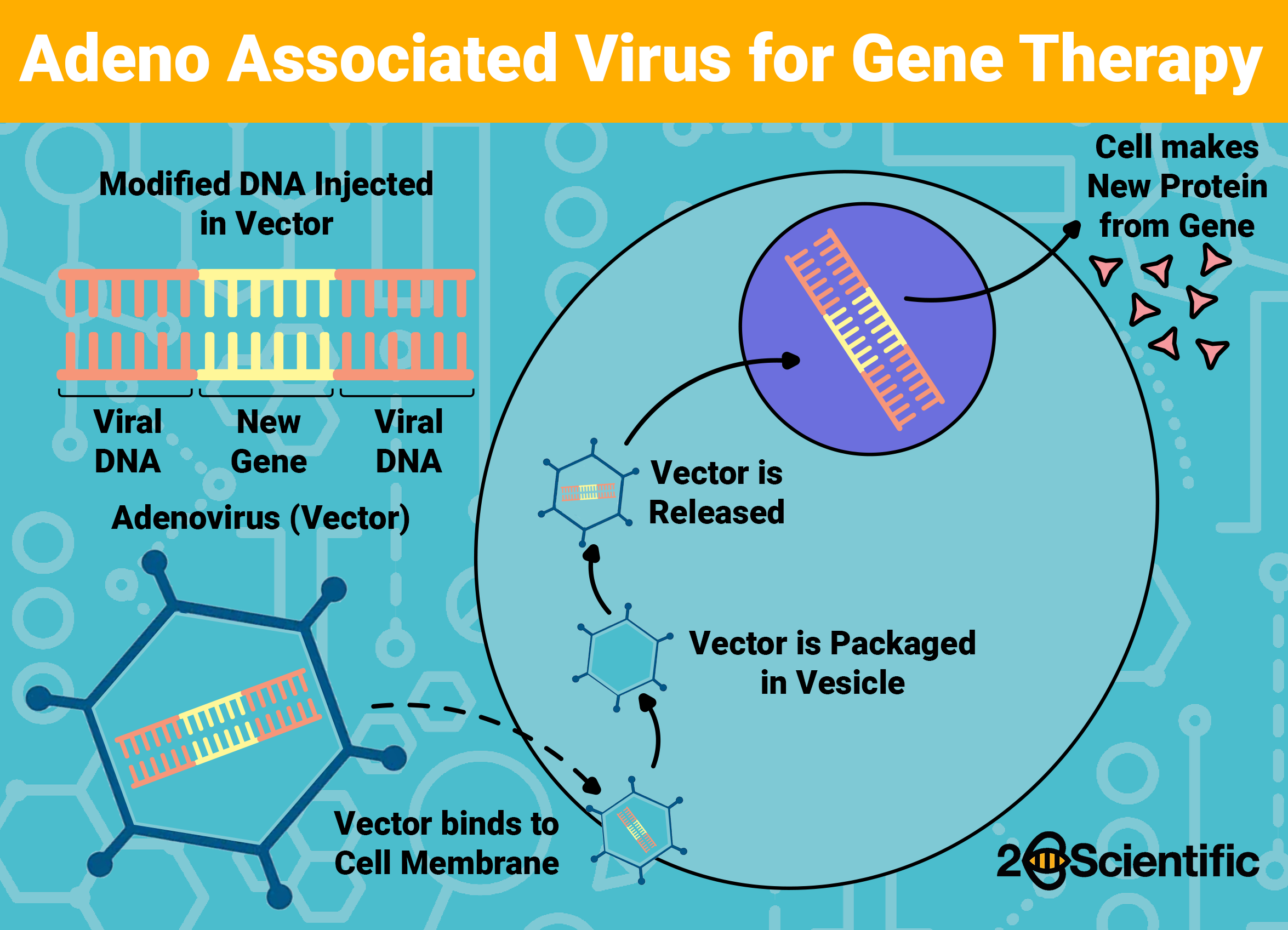AAV for Gene Therapy
Adeno-associated virus (AAV) has become one of the most promising tools in gene therapy due to its ability to safely deliver genetic material to specific cells and tissues. AAV as a gene vector does not cause disease in humans, making it an ideal candidate for therapeutic use, as it poses minimal risk to patients. In gene therapy applications, AAV is engineered to carry therapeutic genes into target cells, where these genes can replace defective ones or introduce new genetic instructions to treat or manage diseases caused by genetic mutations.

AAV vectors are particularly versatile because they can infect both dividing and non-dividing cells, making them suitable for treating a wide variety of conditions, including neurological, muscular, and metabolic disorders. Researchers can modify AAV's capsid (outer protein shell) or use a different serotypes to target specific tissues such as the liver, muscles, or the central nervous system, ensuring that the therapy is delivered precisely where it's needed. Additionally, AAV induces a relatively mild immune response, allowing for the possibility of multiple administrations in some treatments, which is crucial for chronic conditions requiring sustained gene expression.
AAV is primarily applied in the treatment of genetic disorders, such as haemophilia, by delivering functional copies of defective genes to patient cells. It has also shown promise in treating neurodegenerative diseases like Parkinson’s and spinal muscular atrophy (SMA), where AAV vectors can introduce therapeutic genes directly to affected neurons.
Advantages of AAV in Gene Therapy:
Non-pathogenic: It does not cause disease in humans, making it safer for clinical use.
Wide tropism: It can infect both dividing and non-dividing cells, useful for a range of tissues and organs.
Tissue targeting: AAV vectors can be engineered to target specific cell types or tissues by modifying the viral capsid.
Stable gene expression: AAV can induce long-term gene expression, critical for treating chronic or lifelong conditions.
Low immune response: Induces a mild immune reaction, reducing the risk of adverse effects and enabling the possibility of repeat treatments.
Ongoing research aims to overcome the limitations of AAV, such as developing strategies to evade immune detection and engineering novel capsids for more efficient delivery. The field is also exploring combination therapies, where AAV vectors are used in tandem with other gene-editing technologies like CRISPR-Cas9, broadening the potential applications of gene therapy for more complex genetic and acquired diseases. As AAV-based therapies continue to advance, they offer hope for the treatment of previously untreatable or incurable conditions, with the potential to significantly improve patient outcomes.
Relevant Products for Adeno Associated Virus for Gene Therapy | |||